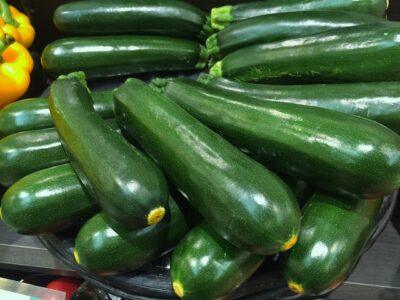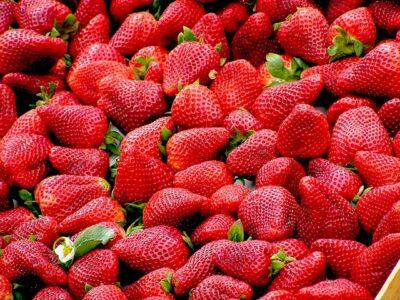6 Popular Fruits & Vegetables You Didn’t Know Could Be Preserved was originally published on http://www.totalsurvival.net/
Canning Fruits & Vegetables
When most people think of canning food for winter, there are a few vegetables and fruits that immediately come to mind.
But a look through any good quality food preservation book—such as the ones published by Ball, the National Center for Home Food Preservation, or the USDA—can reveal some interesting options.
When I find myself with an overabundance of something from my garden and do not want to see it wasted at the end of the season, I am often inspired to search for creative ideas to preserve my harvest in new ways. Over the years, I have dug up a few possibilities that can surprise even some experienced home food preservationists.
Here are a few fruits and vegetables you may not have realized you can preserve:
1. Eggplant
Although there is no recommended method for canning eggplant and it is listed in the “poor to fair” category for dehydrating success, you can still enjoy your eggplant harvest all year long by freezing it. The trick is to use lemon juice in the blanch water. Add a half cup per gallon of water, process in small batches, and prepare only enough fruit for one batch at a time.
For eggplant that I plan to use for frying, I slice it one-third of an inch thick. If it is fresh from the garden and not at all overripe, I leave the skins on. Otherwise, I peel it. After blanching for 4 minutes and cooling the slices in an ice bath, I pat dry on towels and freeze in zip-top bags with wax paper between the layers.
For other uses—ratatouille, stews and casseroles—I peel the eggplant, cut it into chunks, blanch and cool in lemon water the same as with slices, spin dry in a salad spinner, and freeze in batches the right size for one recipe.
It has occurred to me that it would work well to bread it and fry it before freezing, but my garden harvest keeps me too busy for that. If you have time to do so before freezing and save yourself the trouble later, I encourage you to try it.
2. Onions and peppers
The happy surprise here is not that you can preserve them, but the fact that it is so ridiculously easy. To freeze onions, shallots and peppers of all kinds, just cut them to the size and shape in which you are most likely to use them—sliced, chopped or in wedges—put them in bags or containers, and toss them into the freezer. No blanching, no fuss. Just clean, peel, cut up and freeze. They will not be suitable for raw eating when they come out, but will be excellent for just about everything else, from casseroles to omelets to soups to stir-fries.
Looking For Non-GMO Seeds? Get Them From A Company You Can Trust!
They can be preserved in other ways, also. Sweet peppers can be canned plain, pickled or in a variety of relishes. Hot peppers can be pickled, made into jam, or added to hot sauce. Onions, too, can be canned in vinegar, added to relishes and chutneys, and even made into marmalade!
Onions and peppers also dry very well, resulting in excellent culinary options for those off grid or with minimal freezer space.

Canning Fruits & Vegetables
3. Zucchini and summer squash
The truth is, you will never be able to achieve an exact duplicate of yummy fresh-out-of-the-garden squash. But if you cannot bear the thought of going without squash on pizzas and in frittatas and sautéed in olive oil for the winter months, try freezing some slices. Slice, blanch 3 minutes, cool in ice water, pat dry on towels, and pack in bags or containers with wax paper between the layers.
As with eggplant, you may do well to fry it first if you have the time.
You can also grate it and freeze it that way, for use in winter breads, cakes and cookies. I measure out what I need for my favorite recipes and freeze it in those quantities. It does not need to be blanched if it will be used in baked goods, where the texture of the end product does not matter, but be aware that it will become watery when thawed.
Do not can summer squash. Its texture does not allow for it to be safely canned by itself. There is an approved recipe for canning zucchini in pineapple and sugar, but the end result may not taste much like the vegetable you are trying to preserve.
4. Watermelon
Wait, what?! The books say you can freeze it, in seedless cubes or balls, either plain or packed into a container of heavy syrup. I admit I have never done this, and the reason is simple. I live far enough north that raising melons is iffy. When I do manage to raise a few successfully, I indulge in them right then and there.
The one method I have tried is watermelon rind preserves. It is a delicious way to use a part of the melon I would have thrown away anyway, and makes a nice winter treat.
Melons can be dried, but is not recommended. I know people who have done it, but because melons are almost all water, the result may not be satisfactory.
5. Greens
Canning greens is hard work, but the results taste great. If you have a pressure canner and are up for the task, canned greens are an excellent choice.
You also can blanch and freeze them. But you end up with a product that does not look anything like store-bought.
Another option for greens is to simply freeze as-is. If your intention is to use them in a way in which the texture is irrelevant, such as in a smoothie, and you will use them up within a few months, this is the way to go. Pack enough for a single usage into a zip-top bag, flatten to remove as much air as possible, and freeze.

Canning Fruits & Vegetables
6. Fruits and berries without sugar
Many people think it is necessary to make a sugar syrup for canning fruits and berries. But water or fruit juice can be used in most cases. I found a recipe for canning blueberries in water this year. I should note that I use canning recipes only from sources I know to be safe and reliable. This one was from the National Center for Home Food Preservation. I was happy to can my home-grown blueberries using this healthy and hassle-free method.
It is wise to do some searching and read the side notes in order to find low-sugar and no-sugar options for canning fruit. Sometimes they can be found in the “special diet” section.
A word about experimentation before you try it. Ask yourself if the worst thing that can happen is about quality or safety. If it is about quality, and if you can afford the potential loss of losing the product, go ahead and try. But if it is about safety, do not risk it. What you stand to gain is not worth the possible cost.
Use this list for starters, use trusted resources, and have fun. You just never know what you might end up enjoying from your garden on a snowy January day.
What would you add to this list for canning? Share your preserving tips in the section below:
The post 6 Popular Fruits & Vegetables You Didn’t Know Could Be Preserved appeared first on Off The Grid News.
This Article Was Originally Posted On offthegridnews.com Read the Original Article hereThis Article Was Found Here: 6 Popular Fruits & Vegetables You Didn’t Know Could Be Preserved
No comments:
Post a Comment